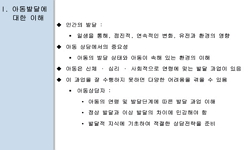본 연구의 목적은 대학취업센터 상담자의 소명, 내담자의 상담자 지각, 작업동맹은 어떠한 관계를 가지는지 알아보는 것이다. 이러한 연구목적을 달성하기 위해 본 연구에서는 다음과 같이 ...
http://chineseinput.net/에서 pinyin(병음)방식으로 중국어를 변환할 수 있습니다.
변환된 중국어를 복사하여 사용하시면 됩니다.
- 中文 을 입력하시려면 zhongwen을 입력하시고 space를누르시면됩니다.
- 北京 을 입력하시려면 beijing을 입력하시고 space를 누르시면 됩니다.
대학취업센터 상담자의 소명, 내담자의 상담자 지각, 작업동맹 간의 관계 = The Relationship among Calling of the University Career Center Counselor, Client Perception of Counselor, and Working Alliance
한글로보기https://www.riss.kr/link?id=T14070142
- 저자
-
발행사항
천안 : 한국기술교육대학교 테크노인력개발전문대학원, 2016
-
학위논문사항
학위논문(석사) -- 한국기술교육대학교 테크노인력개발전문대학원 , 인력개발학과 진로 및 직업상담 전공 , 2016. 2
-
발행연도
2016
-
작성언어
한국어
-
주제어
소명 ; 상담자 지각 ; 작업동맹 ; 상담자 ; 내담자 ; Calling ; Client Perceives ; Working Alliance ; Counselor ; Client
-
발행국(도시)
충청남도
-
형태사항
120 ; 26 cm
-
일반주기명
지도교수: 강혜영
- 소장기관
-
0
상세조회 -
0
다운로드
부가정보
국문 초록 (Abstract)
첫째, 상담자의 소명과 작업동맹의 관계는 어떠한가?
둘째, 상담자의 소명과 내담자의 상담자 지각의 관계는 어떠한가?
셋째, 내담자의 상담자 지각과 내담자가 지각한 작업동맹의 관계는 어떠한가?
본 연구를 위해 전국 대학취업센터에서 진로상담을 담당하는 상담자 110명과 내담자 208명을 대상으로 208쌍의 자료를 수집하여 분석에 사용 하였다. 자료분석은 Windows SPSS 20.0 통계프로그램을 이용하여 기술 통계분석, 요인분석, 상관분석, 다중회귀분석을 실시하였다.
본 연구결과는 다음과 같다.
첫째, 상담자의 소명, 상담자가 지각한 작업동맹, 내담자가 지각한 작업 동맹, 내담자의 상담자 지각 간의 관계를 확인하기 위해 상관분석을 실시한 결과, 상담자의 소명과 상담자가 지각한 작업동맹은 유의미한 정적상 관관계를 나타냈다. 그리고 상담자의 소명과 내담자가 지각한 작업동맹은 유의미한 정적상관관계를 나타냈다. 또 상담자의 소명과 내담자의 상담자 지각 간에도 유의미한 정적상관관계를 나타냈고, 내담자의 상담자 지각과 내담자의 작업동맹 간에도 유의미한 정적상관관계를 나타냈다.
둘째, 상담자의 소명과 상담자가 지각한 작업동맹의 관계를 살펴보기위해 소명의 하위요인을 독립변인으로 두고 상담자가 지각한 작업동맹을 종속변인으로 하여 다중회귀분석을 실시한 결과, 상담자의 소명은 상담자가 지각한 작업동맹 변량의 25%를 설명하였다. 소명 하위요인의 상대적 영향력은 친사회적 성향, 목적/의미, 초월적 부름 순으로 나타났다.
상담자의 소명과 내담자가 지각한 작업동맹의 관계를 살펴보기 위해 소명의 하위요인을 독립변인으로 두고 내담자가 지각한 작업동맹을 종속변 인으로 하여 다중회귀분석을 실시한 결과, 상담자의 소명은 내담자가 지각한 작업동맹 변량의 7%를 설명하였다. 소명 하위요인의 상대적 영향력은 초월적 부름, 친사회적 성향, 목적/의미 순으로 나타났다.
셋째, 상담자의 소명과 내담자의 상담자 지각의 관계를 살펴보기 위해 소명의 하위요인을 독립변인으로 두고 내담자의 상담자 지각을 종속변인 으로 하여 다중회귀분석을 실시한 결과, 상담자의 소명은 내담자의 상담자 지각 변량의 8%를 설명하였다. 소명 하위요인의 상대적 영향력은 초월적 부름, 친사회적 성향, 목적/의미 순으로 나타났다.
넷째, 내담자의 상담자 지각과 내담자가 지각한 작업동맹의 관계를 살펴보기 위해 내담자의 상담자 지각을 독립변인으로 두고 내담자가 지각한 작업동맹을 종속변인으로 다중회귀분석을 실시한 결과, 내담자의 상담자 지각은 내담자가 지각한 작업동맹 변량의 53%를 설명하였다. 상담자 지각 하위요인의 상대적 영향력은 신뢰도, 전문성, 호감도 순으로 나타났다.
본 연구의 목적은 대학취업센터 상담자의 소명, 내담자의 상담자 지각, 작업동맹은 어떠한 관계를 가지는지 알아보는 것이다. 이러한 연구목적을 달성하기 위해 본 연구에서는 다음과 같이 연구문제를 설정하였다.
첫째, 상담자의 소명과 작업동맹의 관계는 어떠한가?
둘째, 상담자의 소명과 내담자의 상담자 지각의 관계는 어떠한가?
셋째, 내담자의 상담자 지각과 내담자가 지각한 작업동맹의 관계는 어떠한가?
본 연구를 위해 전국 대학취업센터에서 진로상담을 담당하는 상담자 110명과 내담자 208명을 대상으로 208쌍의 자료를 수집하여 분석에 사용 하였다. 자료분석은 Windows SPSS 20.0 통계프로그램을 이용하여 기술 통계분석, 요인분석, 상관분석, 다중회귀분석을 실시하였다.
본 연구결과는 다음과 같다.
첫째, 상담자의 소명, 상담자가 지각한 작업동맹, 내담자가 지각한 작업 동맹, 내담자의 상담자 지각 간의 관계를 확인하기 위해 상관분석을 실시한 결과, 상담자의 소명과 상담자가 지각한 작업동맹은 유의미한 정적상 관관계를 나타냈다. 그리고 상담자의 소명과 내담자가 지각한 작업동맹은 유의미한 정적상관관계를 나타냈다. 또 상담자의 소명과 내담자의 상담자 지각 간에도 유의미한 정적상관관계를 나타냈고, 내담자의 상담자 지각과 내담자의 작업동맹 간에도 유의미한 정적상관관계를 나타냈다.
둘째, 상담자의 소명과 상담자가 지각한 작업동맹의 관계를 살펴보기위해 소명의 하위요인을 독립변인으로 두고 상담자가 지각한 작업동맹을 종속변인으로 하여 다중회귀분석을 실시한 결과, 상담자의 소명은 상담자가 지각한 작업동맹 변량의 25%를 설명하였다. 소명 하위요인의 상대적 영향력은 친사회적 성향, 목적/의미, 초월적 부름 순으로 나타났다.
상담자의 소명과 내담자가 지각한 작업동맹의 관계를 살펴보기 위해 소명의 하위요인을 독립변인으로 두고 내담자가 지각한 작업동맹을 종속변 인으로 하여 다중회귀분석을 실시한 결과, 상담자의 소명은 내담자가 지각한 작업동맹 변량의 7%를 설명하였다. 소명 하위요인의 상대적 영향력은 초월적 부름, 친사회적 성향, 목적/의미 순으로 나타났다.
셋째, 상담자의 소명과 내담자의 상담자 지각의 관계를 살펴보기 위해 소명의 하위요인을 독립변인으로 두고 내담자의 상담자 지각을 종속변인 으로 하여 다중회귀분석을 실시한 결과, 상담자의 소명은 내담자의 상담자 지각 변량의 8%를 설명하였다. 소명 하위요인의 상대적 영향력은 초월적 부름, 친사회적 성향, 목적/의미 순으로 나타났다.
넷째, 내담자의 상담자 지각과 내담자가 지각한 작업동맹의 관계를 살펴보기 위해 내담자의 상담자 지각을 독립변인으로 두고 내담자가 지각한 작업동맹을 종속변인으로 다중회귀분석을 실시한 결과, 내담자의 상담자 지각은 내담자가 지각한 작업동맹 변량의 53%를 설명하였다. 상담자 지각 하위요인의 상대적 영향력은 신뢰도, 전문성, 호감도 순으로 나타났다.
다국어 초록 (Multilingual Abstract)
First, which is relationship between the calling of counselor and working alliance? Second, which is relationship between the calling of counselor and client perceptions of counselor? Third, which is relationship client perceptions of counselor and working aliance percieved by client?
For this study, the subjects were 208 counselor-client dyads which is from 110 counselors and 208 clients at university career center. The data analyzed by frequency analysis, reliability, descriptive statistics,
factor analysis, correlation analysis, and multiple regression analysis were carried out using Windows SPSS 20.0 Statistical program.
The results of the study was as follows.
First, as a result of correlation analysis to identify the relationship among counselor’s calling, it was the correlation between counselor’s calling and working alliance perceived by counselor was positive. Also, correlation between counselor’s calling and working alliance perceived by client was positive. Then, the correlation between counselor’s calling and client perceptions of counselor was positive. In addition to the correlation between client perceptions of counselor and between working alliance perceived by client. Moreover, the correlation between client perceptions f counselor and working alliance perceived by client was positive.
Second, it was carried out multiple regression analysis to identify the relationship between counselor’s calling and working alliance perceived by counselor. In the model, Counselor’s calling factors were independent variables and working alliance perceived by counselor was dependent variable. As a result of multiple regression, counselor's calling had positive effect on working alliance perceived by counselor, which explanatory power of the regression model was 25 percents.
Prosocial orientation was more effective than transcendent summons and purpose/meaning in counselor’s calling.
In addition to, it was carried out multiple regression analysis to identify the relationship between counselor’s calling and working alliance perceived by client. In the model, Counselor’s calling was independent variables and working alliance perceived by client was dependent variables. As a result of the mulitiple regression analysis, counselor’s calling had positive effect of working alliance perceived by client, which explanatory power was 7 percents. Transcendent summons was more drrective than purpose/meaning and prosocial orientation in counselor’s calling factors.
Third, it was carried out multiple regression analysis to identify the relationship between counselor’s calling and client perceptions of counselors. In the model, Counselor’s calling factors were independent variables and client perceptions of counselors was dependent variable.
As a result of multiple regression, counselor’s calling had positive effect on client perceptions of counselor, which explanatory power was 8 percents. Transcendent summons was more drrective than purpose/meaning and prosocial orientation in counselor’s calling.
Fourth, it was carried out multiple regression analysis to identify the relationship between client perceptions of counselors and working alliance perceived by client. In the model, client perceptions of counselors were independent variables and working alliance perceived by client was dependent variable. As a result of multiple regression, client perceptions of counselors client perceptions of counselor had positive effect on working alliance percieved by client, which explanatory power was 52 percents. The relative effects of client perceptions of counselor factors were in order of trustworthiness, expertness, attractiveness.
The purpose of the study was to analyze the relationship among calling of the university career center counselor, client perceptions of counselor, and working alliance. In order to solve the purpose, the research subjects are as follows. First, which ...
The purpose of the study was to analyze the relationship among calling of the university career center counselor, client perceptions of counselor, and working alliance. In order to solve the purpose, the research subjects are as follows.
First, which is relationship between the calling of counselor and working alliance? Second, which is relationship between the calling of counselor and client perceptions of counselor? Third, which is relationship client perceptions of counselor and working aliance percieved by client?
For this study, the subjects were 208 counselor-client dyads which is from 110 counselors and 208 clients at university career center. The data analyzed by frequency analysis, reliability, descriptive statistics,
factor analysis, correlation analysis, and multiple regression analysis were carried out using Windows SPSS 20.0 Statistical program.
The results of the study was as follows.
First, as a result of correlation analysis to identify the relationship among counselor’s calling, it was the correlation between counselor’s calling and working alliance perceived by counselor was positive. Also, correlation between counselor’s calling and working alliance perceived by client was positive. Then, the correlation between counselor’s calling and client perceptions of counselor was positive. In addition to the correlation between client perceptions of counselor and between working alliance perceived by client. Moreover, the correlation between client perceptions f counselor and working alliance perceived by client was positive.
Second, it was carried out multiple regression analysis to identify the relationship between counselor’s calling and working alliance perceived by counselor. In the model, Counselor’s calling factors were independent variables and working alliance perceived by counselor was dependent variable. As a result of multiple regression, counselor's calling had positive effect on working alliance perceived by counselor, which explanatory power of the regression model was 25 percents.
Prosocial orientation was more effective than transcendent summons and purpose/meaning in counselor’s calling.
In addition to, it was carried out multiple regression analysis to identify the relationship between counselor’s calling and working alliance perceived by client. In the model, Counselor’s calling was independent variables and working alliance perceived by client was dependent variables. As a result of the mulitiple regression analysis, counselor’s calling had positive effect of working alliance perceived by client, which explanatory power was 7 percents. Transcendent summons was more drrective than purpose/meaning and prosocial orientation in counselor’s calling factors.
Third, it was carried out multiple regression analysis to identify the relationship between counselor’s calling and client perceptions of counselors. In the model, Counselor’s calling factors were independent variables and client perceptions of counselors was dependent variable.
As a result of multiple regression, counselor’s calling had positive effect on client perceptions of counselor, which explanatory power was 8 percents. Transcendent summons was more drrective than purpose/meaning and prosocial orientation in counselor’s calling.
Fourth, it was carried out multiple regression analysis to identify the relationship between client perceptions of counselors and working alliance perceived by client. In the model, client perceptions of counselors were independent variables and working alliance perceived by client was dependent variable. As a result of multiple regression, client perceptions of counselors client perceptions of counselor had positive effect on working alliance percieved by client, which explanatory power was 52 percents. The relative effects of client perceptions of counselor factors were in order of trustworthiness, expertness, attractiveness.












